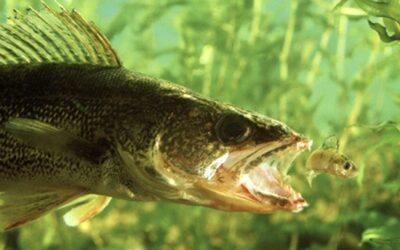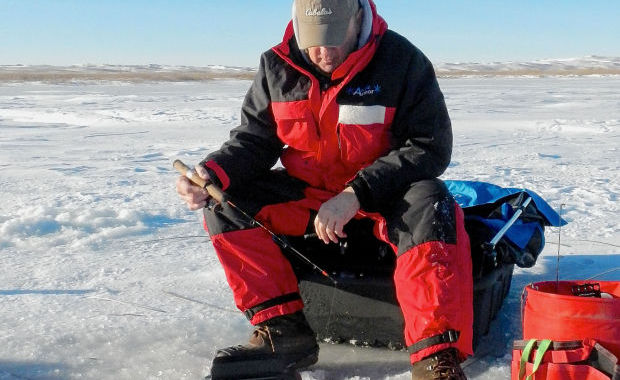There aren’t too many fishing publications or fishing shows where you won’t hear the words structure mentioned several times.
One thing is for sure, when you locate the structure in a body of water, you’re going to find the fish.
Structure, exactly what is it? My definition of structure would be any difference or change appearing on the bottom. At times, it might be large and at others, it’s minuscule.
No matter what size or type of structure you find on a given body of water, it’s a good bet that there will be some aquatic life exists in the area.
Know that we know that the fish you’re hoping to catch might be relating to some sort of structure in the lake, all you need to do is to locate the right piece of structure.
This change in the bottom contour can attract many numerous different species of aquatic creatures.
To make the underwater structure easier to understand let’s put it into above water terms; imagine a large pasture is your body of water with a large tree in the middle and a small clump of plum brush in the corner.
Fish are like any other animal such as a deer or coyote and they enter the pasture, the first thing they’re going to see is these two changes or features in the field and they’ll be drawn to it. If they were underwater, these changes would be called structure.
The change doesn’t need to be huge, as it can be a slight depression on the bottom or areas where the bottom content changes from a soft mud bottom to one with hard gravel. I’ve caught fish around some structure so small, unless I had seen it when the water was low, I would have never known it was there.
It could be a few weeds, rocks, a hump, points the old river channel a submerged tree. It doesn’t have to be a drastic change; it just needs to be something different.
WHY FISH RELATE TO STRUCTURE
Studies have shows us how fish relate to structure and how much is needed in order for the fish to be attracted to one particular area.
In one study, largemouth bass where put into a round metal stock tank with no structure, which gave the fish nothing to relate to and they were scattered all over the tank.
Then a few rocks where placed in the middle of the tank and things changed, as all of the fish moved onto the rock pile.
The last part of this test really puts it into perspective. They then painted a black circle on the bottom of the tank, which only changed the looks of the bottom, with the bass moving right on top of the circle, so you see even the slightest change in the bottom configuration or structure can and does attract fish.
What draws these fish to these areas is simple; structure gives the fish everything they need.
Food Source
Aquatic creatures are attracted to these areas looking for a meal, as this is where there food source is. Structure is attractive to all aquatic creatures, from the smallest microorganisms to the minnows and baitfish as well as the larger game fish, as they will all be relating to or using the structure on the bottom.

The smallest change in the bottom will attract fish, on a recent trip, the author took this and other smallmouth bass from a small rock pile.
Structure is where the aquatic food chain begins and ends in some instances.
Security
These areas also offer security, giving the aquatic insects, minnows, fry, crawdads and other creatures a place to hide and hopefully to keep from being eaten.
Comfortable Water Temperatures
Some types of structure, for instance a weed beds and submerged timber give fish a place to get out of the sun and in the case of the weedbeds, more oxygenated water during the hot weather.
In the past, I’ve found walleyes lying in shallow muddied water during the heat of the day next to the only structure on that stretch of the river. It was a 4” deep depression running from the shore out into the deeper water. This foot wide trench was created when heavy rains washed off the adjacent road.
The baitfish, in this instance, shiners had followed the zooplankton into the shoreline and was hiding in the depression from the game fish. When one made the mistake of poking his head out of the depression, a walleye was there to make sure that it didn’t get a chance to make that mistake again.
We ran into a similar situation on a recent trip to the Webster, SD area as the only real structure in the lake that we could find were submerged trees, not exactly what most people would consider prime walleye structure.
Several factors made these trees ideal walleye habitat or structure.
The 25 MPH wind that was blowing into the trees had blown zooplankton into the shoreline, bringing the baitfish with it; this along with the wind blowing into the shoreline where the submerged trees were standing had created a “magnum” mud line.
The mud line was created when waves crash into the shoreline and as they came back away from the shore, they carried sediment out into the water.
This muddied water allowed the light sensitive walleyes to move shallow into the flooded trees, which now has became ideal structure attracting not only walleyes, but all species of predator fish.
On this trip, we tried several different methods to fish this area with our heavier Cabela’s Firetiger colored lipless crankbait, which are generally considered a bass bait cast up into the trees working the best.
It seems at times, that some anglers may think that the only one particular structure is holding all the fish. Thinking that area is the only place where the fish are biting.
When in fact that there are probably dozens of other areas on the lake areas where they may find the same scenario is being played out.
If you find some type, of structure, that’s holding fish but you don’t want to fight the crowds. Take the information that you’ve learned from that area and search for other structures that are similar. It’s a safe bet that once you locate a similar area, there’ll be fish biting there also.
If the crowd is trolling crankbaits along a muddied up rocky shoreline with a 56 degree surface temperature and rocks extending from the shore line out into 5 to 6’ foot of water, you should be able to take this information and head to another area with similar structure to see if you can find your own hot spot.
Not all structure in the lake will hold fish at the same time, but unless something changes drastically, every year when conditions are about the same, you’ll be able to catch fish over certain types of structure.
It’s not rocket science, it all has to do with the wind, water temperatures and water clarity.
On calm sunny days, in a clear water lake all aquatic life will relate to deeper structure to avoid the direct sunlight.
Of course, the exception to this is if the wind is blowing hard as you’ll want to fish the structure on the windy side, as the food chain will be forced to follow their food.
If you’re fishing dirty or turbid water, you may be able to fish the shallow structure throughout the day until shallow water temperatures become too hot.
Don’t overlook even the slightest piece of structure as a small change in the bottom contour can hold some truly big surprises.





0 Comments